

| Identification help for Water Carpet and Small Phoenix |
| .............. |
| Aimed at the newcomer to moth
trapping, this page looks at another two moths, that can
sometimes be misidentified and hopefully, may even manage
to give a few identification pointers along the way. Although not completely on the wing at the same time, Water Carpet and Small Phoenix will occur together as their respective flight periods overlap in April and May. But by the time Small Phoenix numbers are at their Spring peak, Water Carpet numbers are already on the decline. Both moths are found in deciduous or mixed woodland, but Small Phoenix is certainly much less reliant on a woodland habitat and will be recorded from urban sites. To record Water Carpet, then an after dark trip to woodland is often needed. In fact the Nottinghamshire distribution of Water Carpet is perhaps less well known than many other moths, through being on the wing earlier in the year, but it does seem to be a moth of areas west of the Trent Valley. |
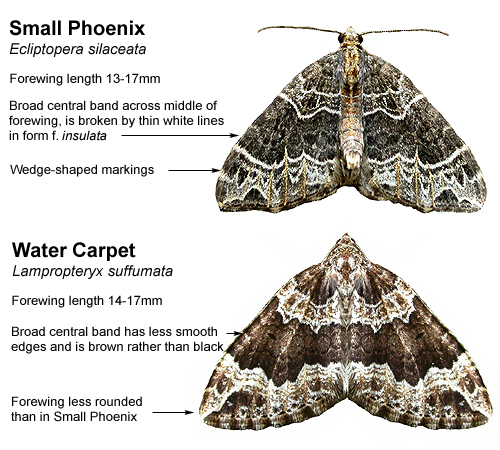 |
| .............. | ||
| The only other possible confusion species with these two moths, are perhaps Broken-barred Carpet (Electrophaes corylata) which has a similar Nottinghamshire range to Water Carpet, and Devon Carpet (Lampropteryx otregiata) which has recently appeared in neighbouring counties. There are no post-1990 records of Devon Carpet for Nottinghamshire, just a 1986 Sherwood Forest record, so any small sized, late flying Water Carpets, might be worth checking more closely. | ||
| 70.094 .... B&F 1759 .... Small Phoenix Ecliptopera silaceata ([Denis & Schiffermüller], 1775) |
Nottinghamshire status and distribution: A common and widespread moth in Nottinghamshire, with a general concentration of records stretching from Nottingham in the south of the county, to the Retford area in the north-east. This is most probably down to the lack of regular moth recording from sites east of the River Trent, rather than it being genuinely restricted through geographical/habitat reasons. It frequently occurs in both urban and suburban areas, so should be expected anywhere. Flight period: There are two extended broods which virtually overlap and moths can occur between late April and August, with occasional moths lingering into September. Peak numbers for the Spring brood, tend to be on the wing during late May and continue into June. The second brood occurs from mid-July onwards, leading to a pronounced peak during August. |
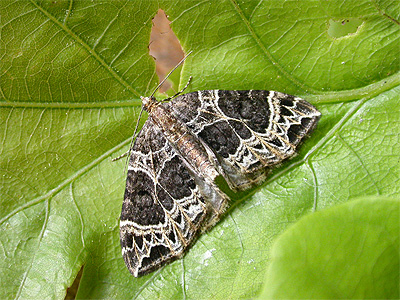 |
| .............. | ||
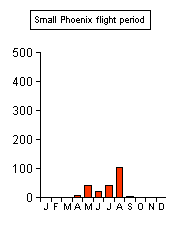 |
Identification
features: An attractive and well marked moth
which once learnt, will soon become familiar with
experience. The forewings are dominated by having a
blackish basal area and a broad, black crossband, edged
with white. This is indented along the basal edge by a
shallow ' v ' mark, but its other edge is often slightly
scalloped and softer. There are two forms which occur in
most populations of Small Phoenix. The form insulata has
the central crossband finely divided by white lines
(above photograph) while the other form has the crossband
unbroken. Between the crossband and the outer edge of the forewing, there are a series of black wedges which are edged in white and along the outer edge of the forewing are at least one prominent black patch, located towards the tip of the wing. A final aid to separating Small Phoenix from Water Carpet, is that the male Small Phoenix rests with the end of the abdomen pointing upwards, although it is worth remembering that the males of some other Carpets do the same. |
|
| 70.103 .... B&F 1750 .... Water Carpet Lampropteryx suffumata ([Denis & Schiffermüller], 1775) |
Nottinghamshire status and distribution: Probably an under-recorded moth in Nottinghamshire, and is undoubtedly less widespread than Small Phoenix. It is unlikely to occur in urban moth traps, unless operated within close proximity to wooded and well vegetated habitats. Usually common in deciduous woods where it occurs in the northern-half of the county and is certainly a common moth throughout the Sherwood Forest NNR. Also seems equally common at MV lights run in woodlands lying on heavier soils. Flight period: Water Carpet is a single brooded species, being on the wing from around the middle of March and with a very pronounced peak coming in the last week of April and into the first week of May. It is still on the wing during much of May, but numbers start to decline well before the beginning of June. |
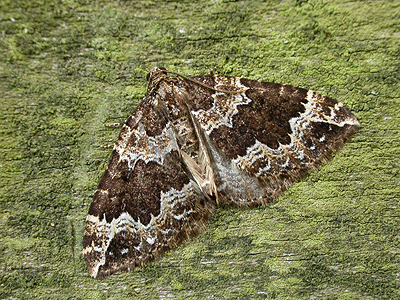 |
| .............. | ||
 |
Identification
features: Another Carpet where the central
crossband on the forewings is the most prominent feature,
Water Carpet is similar to Broken-barred Carpet Electrophaes
corylata (which flies slightly later) and a better
possible confusion species could be the smaller Devon
Carpet Lampropteryx otregiata, which has not
been recorded in VC56 since 1986 and has recently started
to appear in counties bordering Nottinghamshire. The crossband is dark brown in Water Carpet, rather than blackish and both the inner and outer edges are less smooth than on Small Phoenix. Before it reaches the inner edge of the forewing, the band narrows suddenly to almost half its width. The basal area of the forewings have a distinct dark brown patch and there are a range of dark patterns, diffuse blotches and other markings along the outer edge of the forewing, giving the moth a less-clean appearance than Small Phoenix. Pay attention to the wing-tips in both moths, as they are less rounded in Water Carpet. |
|
| .............. | ||
| Nottinghamshire
(VC56) distribution Only Water Carpet shows any real restriction to its range and is less inclined to be found within urban or suburban habitats, or at least away from more rural areas. |
||
| ..... | ||
| Small Phoenix Ecliptopera silaceata | Water Carpet Lampropteryx suffumata | |
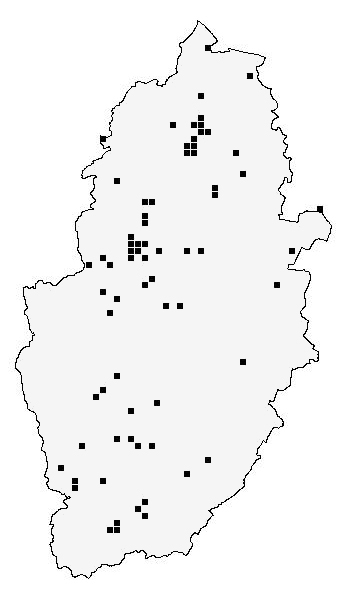 |
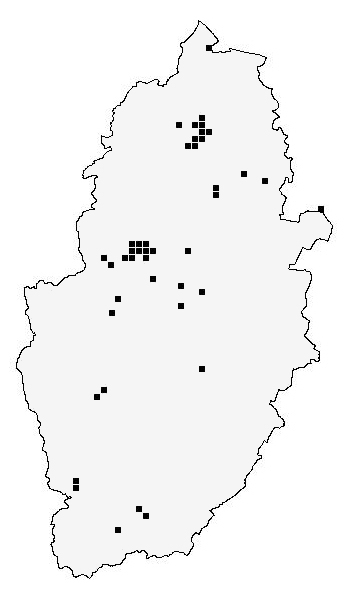 |
|